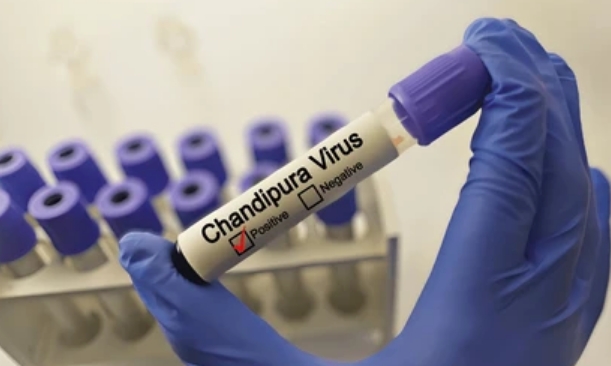Preemptively Combating Chandipura Virus
July 31, 2024 | Wednesday | Views | By Dr Manbeena Chawla
The virus belongs to the rhabdovirus family, and has a single-stranded RNA and five genes
image credit- shutterstock
An emerging pathogen that causes rapidly progressing influenza-like illness and acute encephalitis often leading to coma and death of the human host, Chandipura vesiculovirus (CHPV) is back again claiming lives in Gujarat and Rajasthan.
First identified during a 1965 outbreak in Chandipura village, Maharashtra, the virus has probably been endemic in this region for decades, and might have been responsible for several earlier outbreaks of encephalitis that have been recorded in India since 1954.
However, the first evidence for the Chandipura viral association with human epidemics was obtained during the monsoon season in 2003, when this virus was identified in patient samples during an outbreak in central India as a determinant of the acute encephalitis with a high fatality rate claiming more than 300 lives, mostly children, in Andhra Pradesh, Maharashtra and Gujarat. Later, cases have also been documented in Nagpur, Muzaffarpur and Warangal.
The medical examination of patients recorded high-grade fever, occasional vomiting, rigours, sensorium, drowsiness leading to coma and death within 48 hours. Subsequently, another outbreak of this infection with more than 75 per cent fatality rate was reported in the eastern region of Gujarat, in 2004.
The virus belongs to the rhabdovirus family, and has a single-stranded RNA and five genes. It travels through arthropod vectors like sand flies and mosquitoes. The virus reaches the salivary gland of the insect and is transferred to the mammalian host through bites. Animal studies showed that the virus affects only neurons and causes neurodegeneration.
The virus upon entering the neurons triggers cellular stress factors and release of reactive oxygen species (ROS). The granules produced in response to cellular stress have been implicated in viral replication and ROS generation, which stimulates neuronal death. Both these phenomena cohesively explain the neuropathogenesis and neurodegeneration following the viral infection.
However, the geographical distribution of the virus might extend well beyond India. It has also been detected in sand flies in Senegal and Nigeria. The viral detection in sand flies of the African continent indicates a high risk of its spread causing an epidemic in more parts of the globe. Given these forewarnings, it is of paramount importance to comprehensively understand viral biology and make efforts in the direction of developing antiviral measures.
Though CHPV was first isolated in 1965, it was considered as an orphan virus due to low pathogenicity to cause infections in man and domestic animals. No efforts were, therefore, made to develop diagnostics or prophylactics. However, post-2003 outbreak in central India, it garnered global attention as a human pathogen of public health importance.
For instance, researchers have demonstrated the application of sandfly and mosquito cell lines for early detection of the infection as the virus antigen could be detected within 2 hours of inoculation using immunofluorescent antibody technique. Also, according to studies, two candidate vaccines against this virus are under development, and awaiting trials.
Providing much needed hope, virologists at the Institute of Medical Sciences, Banaras Hindu University are studying the pathogenic processes of the virus and will be helpful in diagnosis and drug formulation in times to come. This study highlights the important role of microRNA-155 in restricting CHPV multiplication inside the host which can then be used in microRNA based therapy.
Recently, researchers at the National Institute of Virology (NIV) explored the repurposing of the antiviral drug Favipiravir against CHPV. Owing to its use during COVID-19, Favipiravir has emerged as a promising candidate, and its unique characteristics and clinical efficacy have garnered significant attention and demonstrated considerable potential in the fight against viral diseases. NIV has now gathered enough evidence of the antiviral activity of Favipiravir against CHPV infection, and further clinical evaluation may alleviate the associated mortality.
Combined efforts from all stakeholders including virologists, neurologists, paediatricians and the government are warranted to address this public health concern.
Dr Manbeena Chawla
Executive Editor
manbeena.chawla@mmactiv.com









